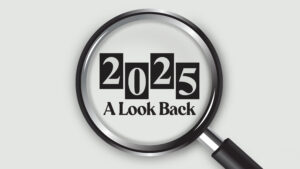Cash flow problems destroy 82% of small businesses, yet most owners focus on boosting sales rather than examining their cost structure. The real culprit often lurks in decisions made before the first customer walks through the door: poorly managed fixed costs.
Unlike variable expenses that rise and fall with business activity, fixed costs remain constant regardless of how much you sell. These predetermined expenses form your business’s financial foundation — and they can either support growth or crush your dreams.
This guide reveals what every small business owner needs to know about fixed costs: how to identify them, why they matter more than you think, and proven strategies to optimize them without sacrificing operations.
Contents:
- Understanding Fixed Costs
- The Dangers of Excessive Fixed Costs
- Strategies to Reduce Fixed Costs
- Long-Term Fixed Cost Management Strategies
- FAQs About Fixed Costs
- Tools for Fixed Cost Management
- Conclusion
Understanding Fixed Costs in Small Businesses
Fixed costs represent all predetermined expenses that remain constant regardless of sales performance or operational volume. Think of them as your business’s monthly bills that arrive whether you have your best month ever or zero sales.
Primary Categories of Small Business Fixed Costs
- Rent and real estate expenses: Commercial rent typically consumes the largest portion of your fixed cost budget. Smart businesses maintain rent between 6%-15% of gross revenue, depending on industry. Restaurants should aim for 6%-10% of total sales, while service-based businesses often operate efficiently with 5%-8% of revenue allocated to rent.
- Insurance premiums: General liability, property, and professional insurance create predictable monthly obligations. Coverage costs vary by industry, but most small businesses invest $1,200-$3,000 annually in basic protection.
- Equipment leases and financing: Technology, machinery, and vehicle payments generate consistent monthly expenses. Equipment financing typically spans 3-7 years, with payments ranging from hundreds to thousands of dollars based on asset value and terms.
- Utilities and communication services: Base utility charges, internet services, and phone systems create predictable monthly expenses. While usage fluctuates, connection fees and service minimums remain constant.
- Software subscriptions and licenses: Modern businesses rely on various software tools — accounting systems, customer management platforms, and productivity suites — that require monthly or annual subscription fees.
- Loan payments: Business loans, lines of credit, and equipment financing create fixed monthly obligations regardless of business performance.
Why Small Business Fixed Costs Matter More Than You Think
Fixed costs create your break-even point — the minimum revenue needed to cover expenses before generating profit. Understanding this relationship helps you make smarter pricing, staffing, and growth decisions.
- The break-even reality check: If your small business fixed costs total $10,000 monthly and your average gross margin is 40%, you need $25,000 in monthly sales just to break even. Every dollar of fixed costs requires $2.50 in revenue (at 40% margins) to cover.
- Cash flow impact during slow periods: Variable costs naturally decrease when sales drop, but fixed costs remain constant. This creates cash flow pressure during seasonal slowdowns or economic downturns.
- Growth implications: High fixed costs require higher sales volumes to achieve profitability. This extends the timeline for reaching sustainable operations and limits flexibility to adapt to market changes.
The Hidden Dangers of Excessive Fixed Costs
Entrepreneurs tend to underestimate how elevated small business fixed costs impact long-term viability. Research indicates that businesses with fixed costs exceeding 40% of gross revenue face significantly higher failure rates.
Reduced Operational Flexibility
High fixed costs limit your ability to adjust expenses during revenue fluctuations. When variable costs represent a larger portion of your cost structure, you maintain more control over profitability during challenging periods.
Increased Capital Requirements
Excessive fixed costs absorb capital that could otherwise fund marketing, inventory, or operational improvements. This creates a cycle where high fixed costs limit growth opportunities that could generate revenue to cover those same costs.
Extended Path to Profitability
Every additional dollar of fixed costs increases your break-even point. New businesses with bloated fixed cost structures often run out of capital before achieving sustainable profitability.
Strategies to Reduce Fixed Costs
Real Estate Cost Optimization
- Renegotiate your lease. Approach landlords 12-18 months before lease expiration to discuss renewal terms. Market research strengthens your negotiating position — vacant spaces cost landlords money, creating incentives for reasonable terms.
- Analyze space efficiency. Many businesses occupy 20%-30% more space than operationally necessary. Conduct an honest assessment of your actual space utilization versus lease obligations.
- Consider subleasing opportunities. Subletting unused space to compatible businesses can reduce net rent costs by 25-50% while maintaining operational flexibility.
- Explore alternative locations. High-traffic locations command premium rents, but many businesses can operate successfully in less expensive areas with strong digital marketing strategies.
Insurance Cost Management
- Review policies annually. Insurance needs evolve with business operations. Review policies annually to eliminate unnecessary coverage and ensure adequate protection for current risks.
- Adjust deductibles strategically. Increasing deductibles from $500 to $2,500 often reduces premiums by 15%-25%. This strategy works best for businesses with adequate cash reserves to handle potential claims.
- Bundle policies for discounts. Combining general liability, property, and professional coverage with single carriers typically generates 10%-15% premium discounts.
- Improve risk management. Implementing safety protocols and risk management procedures may qualify your business for lower insurance rates.
Technology and Equipment Efficiency
- Evaluate lease vs. purchase decisions. High-use equipment often benefits from purchase rather than lease arrangements. Calculate total cost of ownership including maintenance, obsolescence, and tax implications.
- Negotiate equipment terms. Equipment leases often include negotiable terms. Consider longer payment periods to reduce monthly obligations, or explore lease-to-own arrangements.
- Implement energy efficiency measures. Energy-efficient lighting, HVAC systems, and equipment can reduce utility costs by 20%-30%. You may also qualify for rebates for efficiency improvements.
- Optimize communication services. Review internet, phone, and communication packages annually. Many providers offer improved service levels at reduced costs to retain existing customers.
Software and Service Optimization
- Audit software subscriptions. A lot businesses accumulate unused software subscriptions over time. Conduct quarterly audits to eliminate redundant or unnecessary services.
- Negotiate annual contracts. Most software providers offer significant discounts for annual payments versus monthly subscriptions. This approach can reduce costs by 15%-20% while improving cash flow predictability.
- Consider open-source alternatives. Evaluate open-source alternatives for common business functions like accounting, customer management, and productivity tools.
Long-Term Fixed Cost Management Strategies
Fixed cost management requires ongoing attention and strategic planning rather than one-time optimization efforts.
Establish Regular Review Protocols
- Quarterly cost assessments: Document all fixed expenses and track year-over-year changes. Identify cost increases exceeding inflation rates and investigate alternatives.
- Annual market rate analysis: Research current market rates for rent, insurance, and services annually. This information provides leverage for renegotiation discussions and helps identify optimization opportunities.
- Performance impact evaluation: Assess how fixed cost changes impact overall profitability and cash flow. Prioritize cost reduction efforts based on potential financial impact.
Build Flexibility into Future Agreements
- Include escalation caps. When signing new leases or service agreements, negotiate caps on annual increases. Typical arrangements limit increases to 2%-3% annually or tie them to Consumer Price Index changes.
- Negotiate termination clauses. Include provisions that allow termination with reasonable notice if business circumstances change significantly.
- Plan for growth phases. Structure agreements to accommodate business growth without requiring complete renegotiation.
FAQs About Small Business Fixed Costs
What percentage of revenue should fixed costs represent?
Industry research indicates that total fixed costs should not exceed 35%-40% of gross revenue for sustainable operations. Service businesses often operate with lower percentages (25%-35%), while retail and restaurant operations may require higher allocations (30%-40%) due to location requirements.
How can I calculate my fixed cost ratio?
Divide total monthly fixed costs by monthly gross revenue, then multiply by 100. For example: $8,000 fixed costs ÷ $25,000 revenue × 100 = 32% fixed cost ratio. Monitor this ratio monthly to maintain healthy cost structures.
Which fixed costs should I prioritize for reduction?
Start with your largest fixed expenses — typically rent and insurance. These categories offer the greatest potential savings and often include negotiable terms. Focus on costs that don’t directly impact customer experience or operational efficiency.
How often should I review my fixed costs?
Conduct comprehensive fixed cost reviews quarterly, with detailed annual assessments. This frequency allows timely identification of optimization opportunities while providing adequate planning time for major changes.
Can I reduce fixed costs without hurting my business?
Yes, when done strategically. Focus on efficiency improvements, renegotiation of existing terms, and elimination of redundant services. Avoid cutting costs that directly impact customer experience or operational safety.
Should I prioritize reducing fixed costs or increasing revenue?
Both strategies work together effectively. Reducing fixed costs improves profitability on existing revenue while creating more flexibility to invest in revenue-generating activities. Start with cost optimization to improve cash flow, then reinvest savings in growth initiatives.
Technology Tools for Fixed Cost Management
Modern businesses can leverage technology to monitor and optimize fixed costs more effectively.
Expense Management Software
Implement solutions that automatically categorize expenses and track spending patterns. These tools identify cost trends and highlight optimization opportunities that might otherwise go unnoticed.
Automated Payment Systems
Use automated payment systems for fixed expenses to capture early payment discounts and prevent late fees. Some vendors offer 2%-3% discounts for early or automated payments.
Contract Management Platforms
These tools track contract renewal dates, terms, and obligations, ensuring you never miss renegotiation opportunities or accidentally auto-renew unfavorable agreements.
Conclusion
Fixed costs fundamentally determine your operational viability and long-term potential. Businesses that strategically manage these expenses create sustainable competitive advantages and improved cash flow resilience.
The key principles for effective fixed cost management include maintaining total fixed costs below 40% of gross revenue, conducting regular reviews to identify optimization opportunities, and building flexibility into long-term agreements. Remember that every dollar saved in fixed costs drops directly to your bottom line.
Start your fixed cost optimization journey today by conducting a comprehensive expense audit. Document all predetermined monthly expenses, calculate your fixed cost ratio, and identify the three largest opportunities for reduction. Small improvements in fixed cost management create lasting impacts on business profitability and growth potential.
Focus on strategic optimization rather than arbitrary cost cutting. The goal isn’t to minimize all expenses, but to ensure every dollar spent contributes meaningfully to business success. With disciplined fixed cost management, your small business builds the financial foundation needed for sustainable growth and long-term prosperity.






